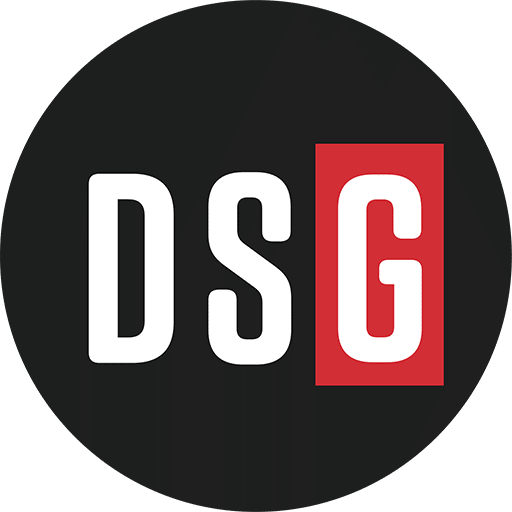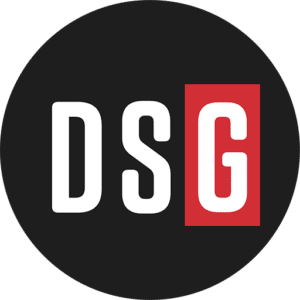FleetPride is the nation’s largest distributor of truck and trailer parts and service in the independent heavy-duty aftermarket.
Before becoming CEO at FleetPride, Kevin Weadick had over two decades of experience leading supply chain, product management and marketing teams in multiple countries for industrial distributor Grainger. His last position there was as president for Grainger’s B2B marketplace business unit Zoro. Weadick helped lead Zoro to over $1 billion in sales. Beyond impressive sales growth, the company’s outstanding culture earned it accolades as an exemplary employer.
Ian Heller and Jonathan Bein, Ph.D., talked with Weadick about how he plans to leverage that experience to replicate this success at FleetPride, integrate digital solutions and expand the company’s service channel.
Ian Heller: You have quite an impressive background. Why don’t you walk us through your career?
Kevin Weadick: I had an excellent opportunity to be a part of the Grainger family of businesses for over 20 years. I started in a branch in Madison, Wis., after finishing up grad school. I’ve worked in Grainger’s Toronto market, in supply chain and product management, as well as category management. I’ve worked in the Netherlands and in England before having the great fortune to come back and lead the team at Zoro for about six years.
I grew the business from just over $400 million to over a billion dollars. More recently, I joined FleetPride. We’re the largest heavy-duty aftermarket parts and service provider in the U.S., with over 4,200 team members who work hard every day to keep the country running. Our goal is to help our customers, typically fleet service centers, keep their vehicles on the road and goods moving throughout the U.S. economy.
Heller: That is what you see as your company’s purpose, to keep America running.
Weadick: Absolutely. You want to have a purpose for your organization. You want your team to feel that they can be engaged in that purpose and contribute not only to the business, but also to the communities they live and work. When you have a purpose like ours, it makes it easy for the team to rally behind it.
Jonathan Bein: What’s the breakdown between the 4,200 team members, between the distribution and the service side?
Weadick: We’re a bit different than other businesses in that our No. 1 selling item is a brake drum, a 110-pound item that goes on to a Class 8 heavy-duty vehicle. From a logistics standpoint, we have over 300 branch and service locations. The majority of our team members are in those locations. We have five distribution centers across the U.S., comprising about 10% of our workforce. The majority of the workforce and team members are out in the field, serving customers every day.
Heller: It’s one of those businesses where the branches will always be important because you have to be where the trucks are. Those trucks are everywhere.
Weadick: Critical. That is where having a strong local footprint and having deep expertise are great. That’s also when you think about ecommerce. A lot of our customers are on the move. They don’t just want to know where we are in their home base. They also want to know where we are when they deliver goods across the country.
Heller: When they were looking for a CEO, they had this desire for digital transformation. You had this unusual combination of skills. Having run Zoro, you get that. You had this core supply chain experience from Grainger for a long time. But Zoro was consistently recognized for having a strong culture. That experience made you such a good candidate for this role. How are you implementing initiatives around those strengths now, in digital transformation, core supply chain and culture?
Weadick: When I joined the business, many of those things were well underway. Part of what attracted me to the role was the fit, in terms of the strategic direction of the organization. Business-to-business (B2B) tends to be slightly behind business-to-consumer (B2C) in adopting digital solutions. You can be on the leading edge of adoption, but customers have to want to adopt. Prior to me coming aboard, FleetPride had recognized it was a trend that would happen in the heavy-duty industry, that people would look for ecommerce solutions in ways they hadn’t in the past. The company had already begun that journey in earnest.
When we think about the supply chain over the last few years, the company had substantially upgraded its technology and physical footprint in order to leverage it. From a culture and purpose standpoint and having a highly engaged team, there was a lot of fit there, too. I focus on making sure that we’re a transparent organization. We had a local town hall at our field support center yesterday, and I’ll be jumping into another town hall right after this. Tomorrow, we have an all-team member town hall. Our goal is to ensure the team understands where we’re going, what our goals are and how they fit into that. From a cultural standpoint, we build on the team’s existing success and accentuate it moving forward.
Heller: This is a whole different industry for you. How’s the reception been?
Weadick: The reception’s been great. I’ve had a lot of fun, and a lot of travel. I’ve been out to over 50 of our locations in the first eight months, in a variety of different markets. I’ve had a chance to visit all of our distribution centers, 50-plus branches and service centers, and meet with team members, customers and suppliers to learn and understand the industry.
Everybody has given me grace and patience. However, I’m never going to know the products we sell as well as our category management team. I’ve got a leadership team that’s steeped in the industry. FleetPride President Mike Harris has been in the heavy-duty industry for 20-plus years. We’ve got a lot of deep experience.
I bring different perspectives. As a leadership team, we have really candid and open conversations about what it is we want to achieve and how we can create clarity for our team. How do we execute? How do we move forward?
Heller: There are significant differences between the products you sold at Zoro and what you sell now at FleetPride. When it comes to embedding digital solutions into the company, that must bring a set of unique challenges. Challenges that someone like yourself who has spent their career in logistics and ecommerce must find interesting.
Weadick: There are a couple big differences between Zoro and FleetPride. The most obvious is the branch-based and service-based model. We have a sales organization that engages with customers. The nature of the customer is very similar, they both run the gamut of small businesses to very large businesses. We sell across all sizes. Although there are differences, fundamentally, it all goes back to why customers want digital solutions from any distributor. I think it’s because of the ease that it brings.
Here’s an example: We have a location in downtown Dallas and within one mile there are 10 competitors. Customers’ historic buying patterns might’ve been going to one location and if they don’t have it, I’ll just go to the next. They have an asset that’s down or their vehicle is down, that means that they can’t generate revenue. There’s an urgency for that part or a repair center. Now, they can use their phone or their website and check to see what locations we have in the greater Dallas area, where that inventory is available and how quickly they can get it.
We take away a friction point.
Different industries adopt at different rates due to their ability to use technology to solve customer problems. We’re in a massive market in the U.S. with relatively low share, but we’re the largest player. That’s an exciting kind of white space. And the adoption curve for digital is only going to go up. That creates a lot of excitement for us. How do we lead this space forward and create more value for the customer? If we solve customer pain points through it, they’ll reward us with more spend.
Heller: Solving logistics must be hard — not just in terms of where you warehouse the products, but the delivery.
Weadick: For sure. We do a lot of our own delivery. Most of our revenue is either from people coming in and picking the product up, or us doing delivery from our own vehicles. Using common carrier from a delivery standpoint is not the majority. That brings different challenges, from creating experiences to attract the right team members, keeping people safe and doing a great job serving the customer. All exciting problems to have.
Heller: Another challenge is how to optimize your salesforce, right?
Weadick: Absolutely. We want to step back and learn how we can help our customers solve more of their problems. How do we orient our sales team members to that? One of the things we’ve seen is our most loyal customers tend to be the customers that buy across our aisle, so they buy more categories.
How do we use that knowledge to make thoughtful recommendations, whether it’s through our sales team, ecommerce or other marketing vehicles? How do we get into the mind space of the customer and help them understand all the different ways that FleetPride can solve their problems? How do we help them understand the different types of service we can provide? A fast-growing part of our business is doing repair service for trailers and trucks. How do we teach our sales team members to also sell service to their customer set? We’ve had a lot of success with that, particularly with larger fleets that want a consistent service proprietor across multiple geographies.
Heller: Here’s a question from one of our webinar listeners: How are you leveraging technology at FleetPride, and how do you evaluate priority?
Weadick: We’re leveraging technology across a few different axes. To help us improve our internal business processes, whether that’s in our core supply chain or in the way that our sales team engage with customers. We’re about to launch a beta of a new ecommerce platform here in the first quarter; we’re really excited about that. That should give us opportunities to serve customers a lot more effectively. We have an industry-leading ecommerce platform today, and this one really takes it to the next level.
In terms of generative AI, I think there’s opportunities that everybody should be thinking about. The cost to develop software is probably going to change dramatically in the coming years. Whether you’re using things like GitHub’s Copilot or even ChatGPT, what you find is maybe not the ability to write perfect software now, but the ability to leverage technology to make your team more productive and give them a head start. There will be a lot of back-office process improvements you can deliver.
One area of technology that I’d be hesitant to leverage, at least in the near-term, are tools meant to help enrich product information. When you have a part that goes onto a big vehicle that’s going fast down a road, you want to be absolutely sure from a product quality standpoint. That’s a place we’ll be thinking about much differently. I do think image recognition and parts identification will be very interesting.
We do have another challenge in that much of the expertise in the trades is getting older. The workforce of people in those roles are aging in a way that is different than the general population. How we use these tools to train our team members to bring them up to speed and solve customer problems faster will be a huge opportunity, as well.


